Call me crazy, but you cannot market a business without content. The ads your customers see? Content. The page they land on after clicking your ad? Content. The blog post they read a year ago that made them habitual with your brand in the first place? Content. The newsletters, appointment reminder texts, and help articles? Content.
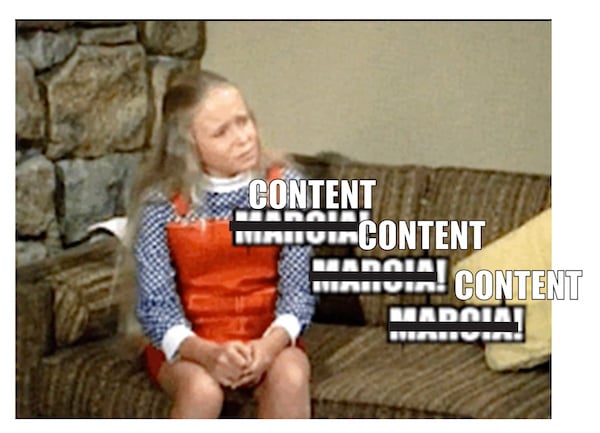
All communication between your leads and customers flows through content. And the way you generate those leads and customers in the first place is through—you guessed it—content.
But content creation can be an arduous process if you don’t know how to do it right. So in this guide, I’m going to show you how to create effective, engaging content that drives your business goals without costing you your sanity in the process. Let’s do it.
Table of contents
What is content creation?
Content creation is, well, exactly what it sounds like. It’s the process of creating (or producing, or drumming up, or whipping together) content. For what purpose? You can create content to inspire, educate, persuade, convince, argue, support, express, and the list goes on. What kind of content? Well, that list can go on too. Content is pretty much any form of media that your audience can consume—written, spoken, video, audio, and the list goes on.
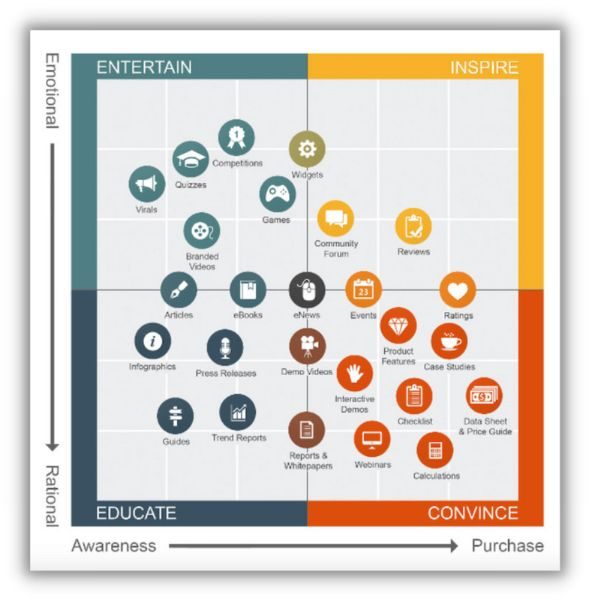
Source
Content creation and marketing
While the technical definition of content creation is quiebro broad, it tends to be synonymous with content marketing. In this regard, content creation is the process of creating content that resonates with your target audience and helps to support your business goals. So you’re not creating content just to express yourself here. You’re creating it with specific personas, funnel stages, and KPIs in mind.
Content creation can apply to content across any stage of the funnel.
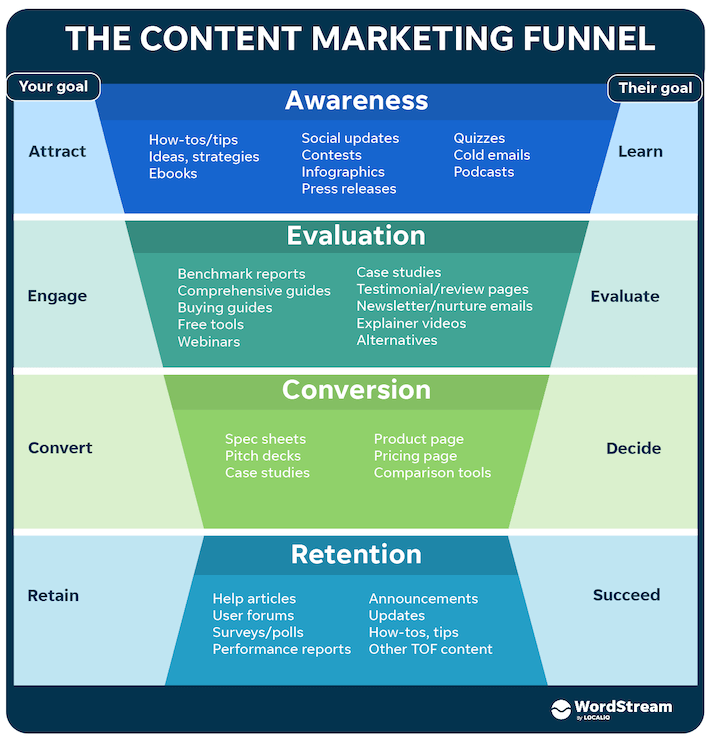
In the next section, we’ll cover some of the popular types of content creation.
Types of content creation
In addition to producing content for a variety of stages in your funnel, you should also be creating a variety of content types. Here are some of the common forms of content creation in marketing.
SEO content creation
SEO content creation refers to writing keyword-targeted articles and website pages. Keywords are the words and phrases your ideal customers are typing into Google. There are several on-page optimizations you can perform so Google knows to serve up that page for those searches—and to get your audience to click on your result.
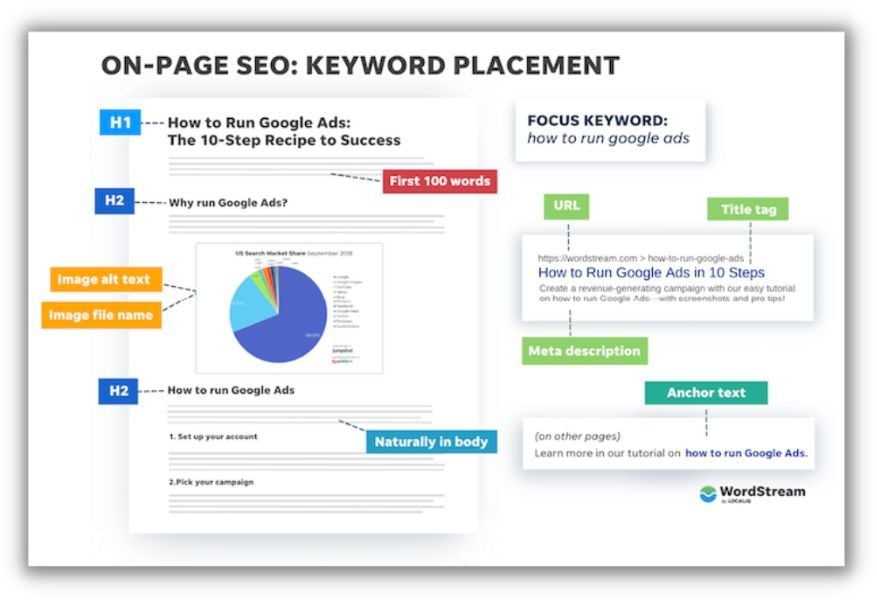
Blog content creation
Blog content creation involves writing high-quality, keyword-targeted, long-form articles (lotta hyphens there) on topics relevant to your audience. The goal is to rank for those keywords, generate qualified traffic to your website, demonstrate your expertise, and gain trust from potential customers.
But not all blog content creation has to be SEO-focused. Many businesses use blog posts to share product and service updates and also give a look inside their culture and core values.
Social media content creation
Social media content creation is just as important as SEO content creation, but it has less to do with keywords and more to do with the appearance and delivery of the information. The best social media posts are visually appealing, easy to digest quickly, and have personality.
Social media content creation will vary according to the social media platform you’re creating content for—a great Facebook post idea is going to be different from that of Instagram, which will be different from that of LinkedIn, TikTok, or Reddit.
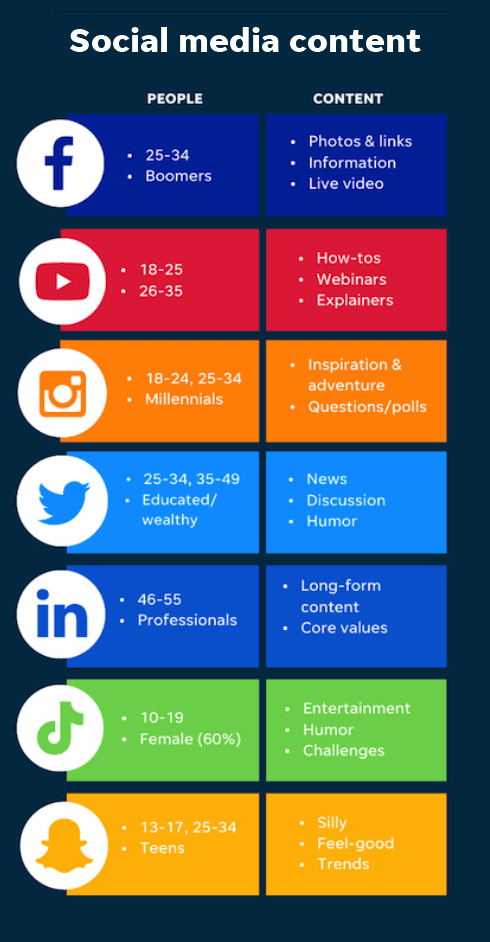
Video content creation
Video content creation runs the gamut of hour-long webinars, five-minute quick tips, three-minute explainer videos, 30-second TV commercials, 6-second bumper ads on YouTube, and even silent slideshow-style ads on Facebook.
While video is highly engaging, video content creation can be pretty resource-heavy. Use our tips to create video ad content on a budget so you can maximize your time and budget.
B2B content creation
B2B content creation is the process of creating content for B2B marketing—that is business-to-business (as opposed to business-to-consumer, or B2C).
B2B marketing is becoming less and less distinct from B2C marketing, since at the end of the day, you’re still targeting individuals and your content should be just as friendly and customized.
But there are some content types that are more popular for B2B than B2C, such as case studies, best practices, how-to guides, and industry trends.
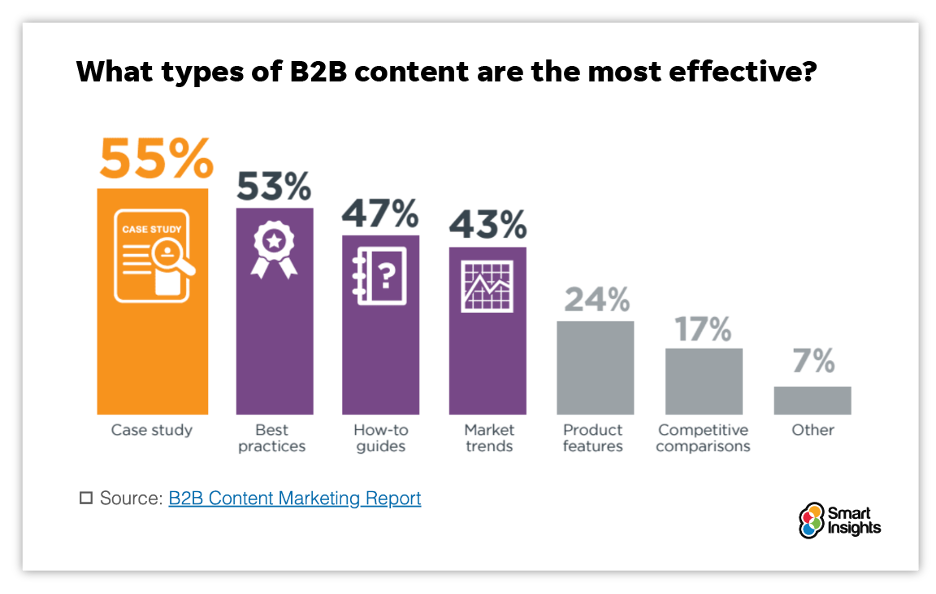
Source
Other forms of content creation
There are countless other forms of content creation, but some honorable mentions include:
- Website content
- Email content
- Ebooks and guides
- Webinars
- Sales enablement
- Audio content
The 5-step content creation process
So how do you go about creating great content? Every content marketer is going to have different methods depending on their personal preferences, their business, target audience, their content team size, and the resources available to them. But these methods all follow a pretty normal process. Let’s take a look:
1. Ideation
There are a number of ways to come up with topic ideas for your content. That includes keyword research, diving into your own website and social media analytics, consulting sales and support teams to learn FAQs, competitive research, and feedback surveys. It’s a good idea to have a place where you keep ideas.
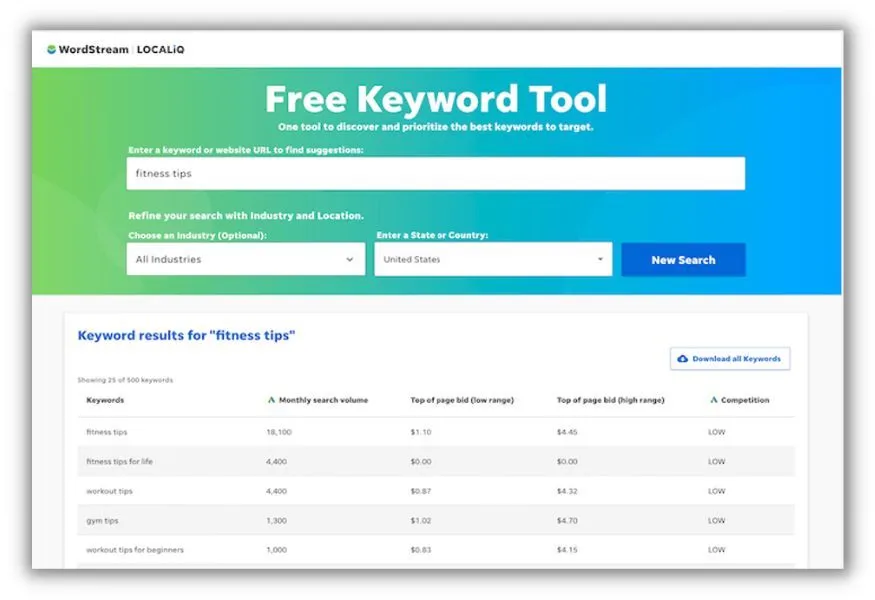
Use WordStream’s Free Keyword Tool to get topic ideas for your content.
2. Planning
Content creation should not happen in just one session. There should always be some planning and preparation involved. Outline the key parts of the content so you can make sure it stays on track with the title and its purpose.
Our SEO-optimized blog post outlines and templates will help you out here!
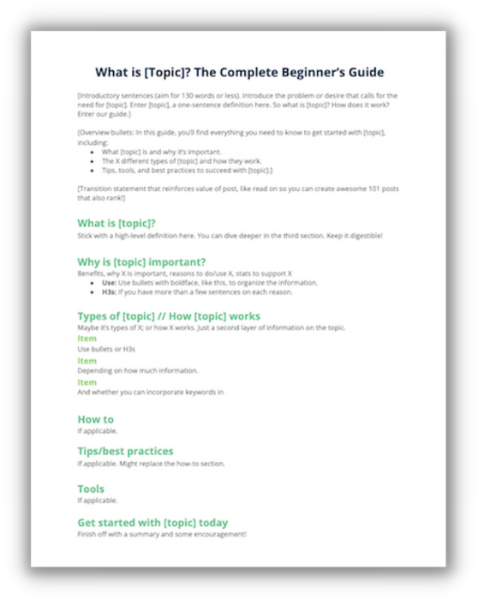
You may also want to establish timelines to keep yourself and others accountable.
3. Creation
Now is when you start populating your outlines and lists with, well, content! The meat and potatoes. My suggestion is to go freely here. You can always pare down later. With blog posts especially, you may even end up writing enough to produce a few different posts within a topic cluster.
4. Editing
This is when you go back through and make sure the piece of content is:
- Clear and concise
- Grammatically correct
- In the right voice
- Stays on track with the topic and goal
- Makes sense and is intuitive
Depending on your team size and methods, there may be a few phases within the editing stage. Just remember: done is better than perfect. With web content, you can always go back in and make updates or improvements. Don’t get caught up in getting it just right or you’ll never hit publish!
Use our guide to content editing for help with prioritizing tasks in this phase of the content creation process.
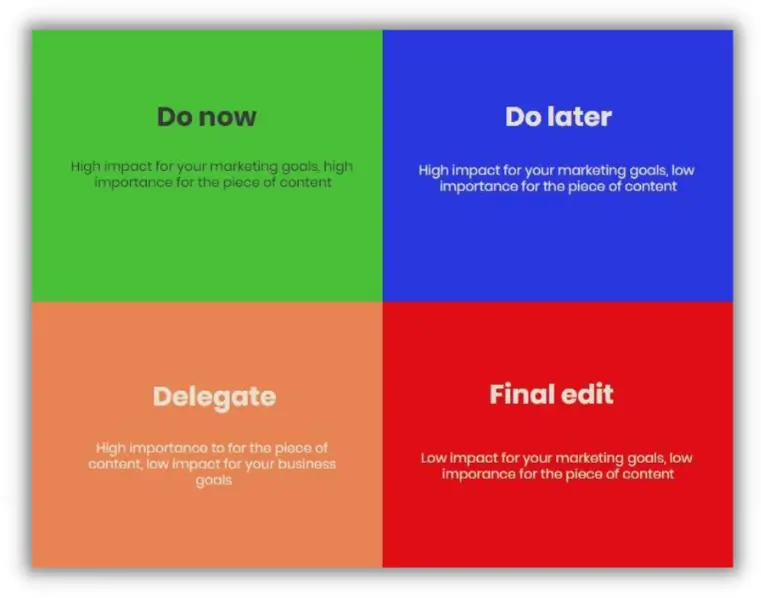
5. Promoting
Now it’s time to distribute your content. Use multiple channels to reach the largest possible audience and make the most of your efforts. This includes your website, emails, and social media platforms. And don’t be afraid to resurface the same content periodically. Your audience is always growing. Share your content internally as well, since your team members—especially for B2B teams—can amplify your reach.
Content creation tips
Let’s finish off with some tips on how to create effective content—and how to do so efficiently.
1. Identify the who and why
Every piece of content should be created for a specific audience with a specific purpose. If you’re going to do a webinar, for example, the topic you decide on, the presentation you create, the positioning of the promotional emails you send, and the ads and social posts you create for it will all depend on who you want to attend and what your goal is with the webinar.
2. Establish levels of awareness
On a similar note, make sure you know the level of awareness of your target audience for each piece of content. Across the buyer journey, there’s pain-point aware, problem aware, solution aware, and brand aware. Make sure you know what level of awareness your audience has for the particular piece of content you’re creating so you can use the language that will resonate best.
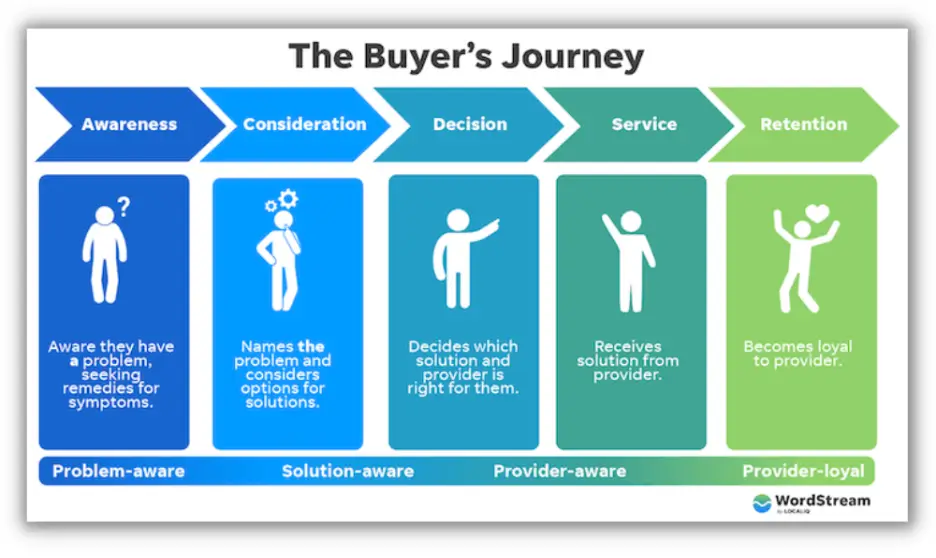
If you don’t already have one, use our tips and templates to create a customer journey map.
3. Rely on data
All too often, content marketing gets misperceived as purely right-brain. But the truth is, if you want a truly lead-generating content marketing strategy, there is a lot of math and data that goes into content creation. You’ll need to:
- Pay attention to keyword volume and competition levels.
- Establish content marketing KPIs so you can set measurable goals for your content. For example, traffic numbers, conversion rates, and overall ROI.
- Track SEO metrics such as time on page, page speed, backlinks, domain authority, and more.
More often than you’d think, we come to find that we thought we knew what our audience would like best but the numbers show otherwise. Use data as your compass and let the creativity flow from there.
4. Create with repurposing in mind
The beauty of content is that there are so many forms of it that you can get a ton of mileage out of just one piece. Repurposing is a content creator’s best friend. Write a thorough, keyword-optimized blog post with images and you don’t just have a blog post. You can make it into any or all of these:
- Linked social post.
- Unlinked social post (such as just an image, excerpt, or stat for quick tidbits).
- A PDF guide (these make great lead magnets).
- A video or slideshow.
- A webinar.
- List item in a blog post roundup.
- Newsletter item.

Source
Focus on targeting topics that are super relevant to your audience (this is why the data matters!) and you’ll find that creating a high volume of engaging content is not as hard as you think.
5. Stick to evergreen topics
On a similar note to the above, most of your content should be evergreen. Content creation, no matter how easy you make it for yourself, is still time and energy exerted.
The best way to make it worth every minute and dollar you spend is to focus on timeless topics that people will always be interested in, rather than trends and fads that will spike and then die out. It’s easier to go in and spruce up evergreen content from time to time than to constantly be chasing the hottest topics.
6. Keep a content library
On that last note, keep a library of all your content so that everyone on the team can have visibility into what exists. Not only will this ensure your content gets the most usage, but it will also prevent unnecessary recreation of content and proliferating content. This is a waste of time and your messaging will become inconsistent.
Also, a content library allows you to keep track of updating that evergreen content. Our content audit templates will come in handy here!
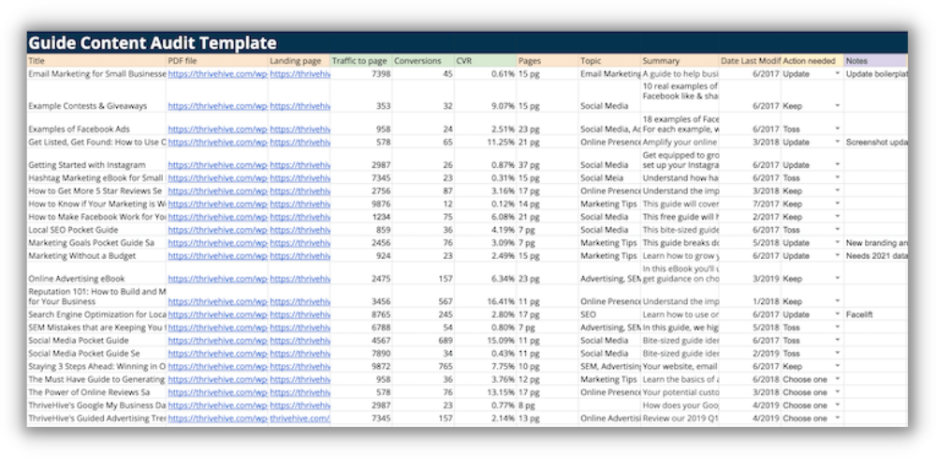
7. Have an editorial calendar
Be sure to create an editorial calendar. Content creation doesn’t happen in isolation. You’ll have multiple pieces in development at merienda. An editorial calendar will help you to keep track of everything in progress, prioritize as needed, hold others accountable, and plan ahead of time. This planning is especially beneficial as it can help you to come up with monthly themes and keep your content extra–cohesive.
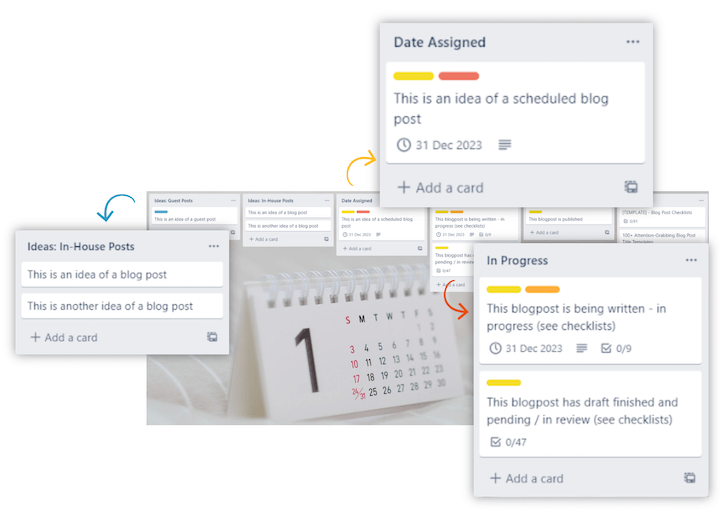
8. Establish a style guide
And finally, have a style guide so that anyone can jump in and help create content while keeping the brand messaging consistent. A style guide may include but is not limited to:
- Tone of voice
- Vocabulary (terms that resonate, terms that don’t)
- Grammar and literary preferences
- Dos and don’ts for images
Content creation summary
Welp, I can safely say that I just took part in content creation about content creation. M’brain hurts. So I’m going to leave it at that, but not before recapping the process and tips.
Whether you’re creating SEO content, blog content, social media content, video, email, or B2B content, be sure to use these tips for content creation:
- Identify the who and why
- Establish levels of awareness
- Rely on data
- Create with repurposing in mind
- Stick to evergreen topics
- Keep a content library
- Have an editorial calendar
- Establish a style guide
- Follow the 5-step content creation process: Ideation, Planning, Creation, Editing, and Promoting
With these tips and processes in place, you’ll be well on your way to creating awesome content that drives your business goals and is worth your time and effort.


